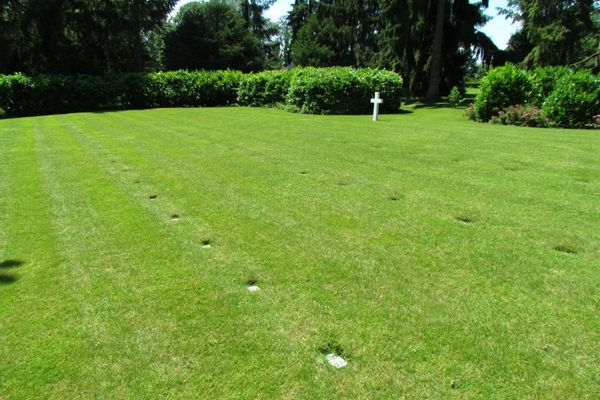About
In a wide field overlooking the ocean in Chile's second-largest city, there are home-made mausoleums unlike any others in the country, and a shrine to a local murderer-turned-martyr who might be persuaded to give you his good graces.
Construction on Cementerio Numero 3 de Playa Ancha, in the city of Valparaíso, began in 1868. Cemeteries 1 and 2, the resting places for well-off porteños, were now enveloped by the development of the growing port city. As the population boomed, a third location was chosen further afield for the poor and the working class.
In the mid-19th century, Chile was a young country commanding an important trade route. Valparaíso was its principal port, and it was enjoying a golden era. The Straits of Magellan in Patagonia were the safest way for steamships to cross from the Atlantic to the Pacific, and the city was the first major stop on the Pacific leg. The country on land was also isolated by the world's driest desert in the north and the Andes in the east, so the port was its key point of connection to the rest of the world. Valparaíso filled with European immigrants looking to make a buck in the thriving economy, particularly as the California Gold Rush pulled ships to the west through the 1840s and 50s. The Cementerio de Playa Ancha provided a place to inter the deceased of these incoming masses.
Surviving into the modern day, it now includes a "German quarter," which features a mix of international surnames and architectural styles representing a wide range of regions and eras.
The most striking feature of the cemetery, though, is its fields of cunas and corrales. Meaning cribs and corrals, these are the makeshift memorials of those who couldn't afford a fancier plot. They resemble the mausoleums constructed for those who can afford it privately, or those who are buried collectively in tombs owned by unions and social societies. They are mostly made out of wood or metal (or in some cases literally a cast-off baby's crib), and decorated with photos, keepsakes, and other souvenirs of the deceased.
While these assemblies bring to mind altars from Mexico's Día de Muertos, no such tradition exists in Chile. Somewhat similar home-made grave decorations are also found in fishing regions in the southern part of the country, indicating that there may be a link between the traditions of various indigenous cultures. But in general the history remains unclear. The cunas and corrales are today unique to Valparaíso's working classes.
The single most famous grave in the cemetery is probably the animita of Emile Dubois. An animita, another blend of indigenous and colonial beliefs, is a shrine to someone who died tragically or violently and is thought to remain in contact with the world of the living. In the case of Dubois, that death was by firing squad. The shrine is covered with hundreds of inscribed plaques thanking Dubois for his help. If you come at the right time you might cross paths with someone saying a prayer or leaving a note asking for intervention.
Related Tags
Community Contributors
Added By
Published
February 23, 2016
Sources
- https://prezi.com/n-gf3nzva0zs/cementerio-general-no-3-de-playa-ancha/
- http://www.digitaljournal.com/article/346529
- http://bayessence.com/emile-dubois-es-historia-y-leyenda/
- http://www.executedtoday.com/2013/03/26/1907-emile-dubois/
- https://en.wikipedia.org/wiki/Valpara%C3%ADso
- https://books.google.com/books?id=3nJFieYUSz4C&pg=PA211&lpg=PA211&dq=cementerios+de+chiloe&source=bl&ots=n_BQuXHUCI&sig=IFQo7OH-hXmdMMeFvigGARmavLg&hl=en&sa=X&ved=0ahUKEwiL_5ioq8HKAhWFbiYKHS9AB2YQ6AEINTAF#v=onepage&q=cementerios%20de%20chiloe&f=false



























